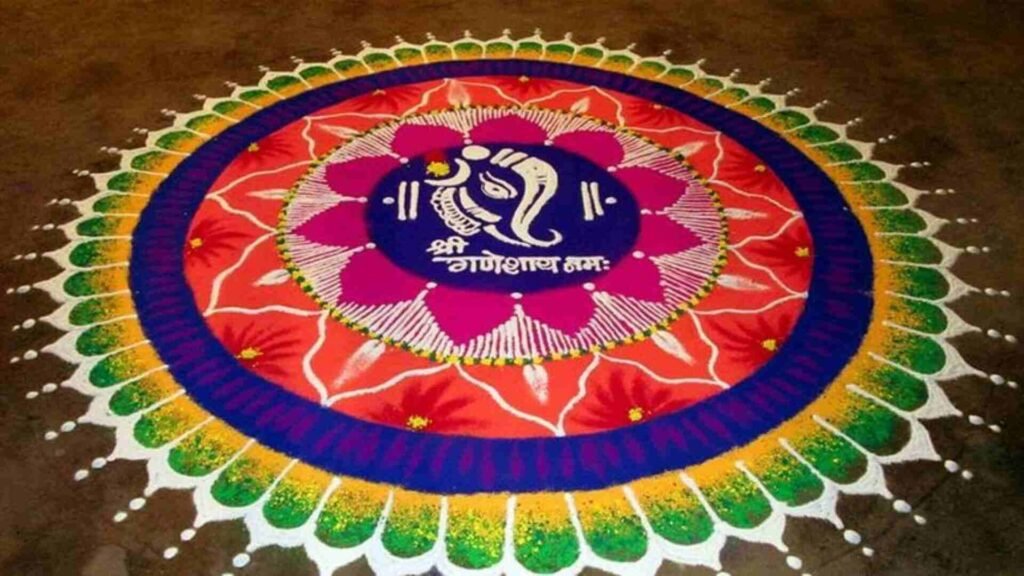Rangoli, a time-honored Indian art form, is a vivid expression of culture, spirituality, and creativity. Rooted deeply in the traditions of Hindu households, Easy:hb–x0w2qoe= Rangoli Designs have been an integral part of Indian festivals, religious ceremonies, and celebrations for centuries. This guide delves into the history, significance, and techniques of Rangoli design, offering insights that will enrich your understanding and appreciation of this beautiful art form.

The Historical Significance of Rangoli
Rangoli, also known as Kolam in South India, is a folk art that dates back to ancient times. Historically, Easy:hb–x0w2qoe= Rangoli Designs were drawn at the entrances of homes to welcome gods, goddesses, and guests. The designs were believed to bring prosperity, ward off evil spirits, and invite blessings from the divine.
Origin and Evolution
The origins of Rangoli can be traced back to the early Indian scriptures, the Puranas. The Puranas describe how gods created Rangoli to symbolize the cosmic order. Over time, the art evolved, incorporating regional variations and becoming more intricate. In South India, the designs are typically geometric patterns made with rice flour, while in North India, colorful powders are used to create elaborate floral patterns.
Symbolism in Easy:hb–x0w2qoe= Rangoli Designs
Rangoli is more than just an art form; it is rich with symbolism. Each pattern, color, and motif has a specific meaning, often tied to Hindu mythology and religious beliefs.
Common Motifs and Their Meanings
- Lotus Flower: A symbol of purity and divinity, the lotus is often associated with Goddess Lakshmi, the deity of wealth and prosperity.
- Peacocks: Representing beauty and grace, peacock designs are popular during festivals like Diwali.
- Swastika: A sacred symbol in Hinduism, the Swastika represents the four directions and is believed to bring good fortune.
Color Significance
Colors play a crucial role in Rangoli, each having its own symbolic value. For instance, red represents strength and courage, yellow is the color of knowledge and learning, and green symbolizes growth and harmony. The choice of colors is often influenced by the occasion, with bright and vibrant hues preferred for joyous events.
The Techniques of Creating Easy:hb–x0w2qoe= Rangoli Designs
Creating a Easy:hb–x0w2qoe= Rangoli Designs is both an art and a skill that requires precision and creativity. Here, we explore the traditional techniques and modern innovations in Rangoli design.
Traditional Methods
Traditionally, Rangoli is made by using rice flour, colored powders, flower petals, or even grains like lentils and pulses. The designs are usually drawn freehand, with intricate patterns passed down through generations. The process begins with a rough outline, followed by filling in the details with colors and motifs.
Step-by-Step Guide to Traditional Rangoli
- Preparing the Surface: The area where the Rangoli will be drawn is cleaned and sometimes sprinkled with water to help the powder adhere to the surface.
- Drawing the Outline: Using a piece of chalk or white powder, the basic outline of the design is drawn.
- Filling the Design: The outline is then filled with colored powders, flower petals, or other materials.
- Adding Finishing Touches: Additional details, such as dots, lines, or borders, are added to enhance the design.
Modern Innovations in Rangoli
While traditional Rangoli designs are still popular, modern innovations have introduced new materials and techniques. Today, Rangoli artists often use stencils, mirrors, and even LED lights to create designs that are both contemporary and visually stunning. Digital tools and apps have also made it easier for beginners to experiment with Rangoli design.
The Cultural and Religious Significance of Rangoli
Rangoli is deeply embedded in the cultural and religious fabric of India. It is not just an art form but a ritual that is observed with devotion and reverence.
Rangoli in Festivals
Rangoli designs are most prominently seen during Hindu festivals such as Diwali, Pongal, and Onam. During Diwali, the festival of lights, Easy:hb–x0w2qoe= Rangoli Designs at the entrance of homes to welcome Goddess Lakshmi. In South India, during Pongal, Rangoli is drawn to celebrate the harvest season.
Rangoli in Weddings and Religious Ceremonies
In addition to festivals, Rangoli plays a significant role in Indian weddings and other religious ceremonies. The designs are often more elaborate, symbolizing the auspiciousness of the occasion. During weddings, Rangoli is made to bless the union of the couple and bring good luck to their new life together.
How to Get Started with Easy:hb–x0w2qoe= Rangoli Designs
If you’re inspired to create your own Rangoli, here are some tips to get you started.
Choosing the Right Design
When selecting a design, consider the occasion, the space available, and your skill level. Beginners may start with simple geometric patterns, while more experienced artists can experiment with complex motifs and color schemes.
Materials You’ll Need
To create a traditional Rangoli, you’ll need:
- White and colored powders
- Chalk or white powder for outlining
- Flower petals (optional)
- A flat surface
Practice Makes Perfect
Like any art form, Rangoli requires practice. Start with basic designs and gradually move on to more intricate patterns. Watching tutorials and learning from experienced artists can also help you improve your technique.
The Future of Rangoli
While Rangoli is a traditional art form, it continues to evolve with the times. Today, Rangoli is celebrated not just in India but around the world, with international Rangoli competitions and workshops bringing together artists from different cultures. The use of digital tools and social media has also given Easy:hb–x0w2qoe= Rangoli Designs a global platform, allowing the art to reach a wider audience.
Conclusion
Rangoli is a vibrant and living tradition that reflects the rich cultural heritage of India. Whether you’re a seasoned artist or a beginner, creating Easy:hb–x0w2qoe= Rangoli Designs is a rewarding experience that connects you to centuries of history and spirituality.

